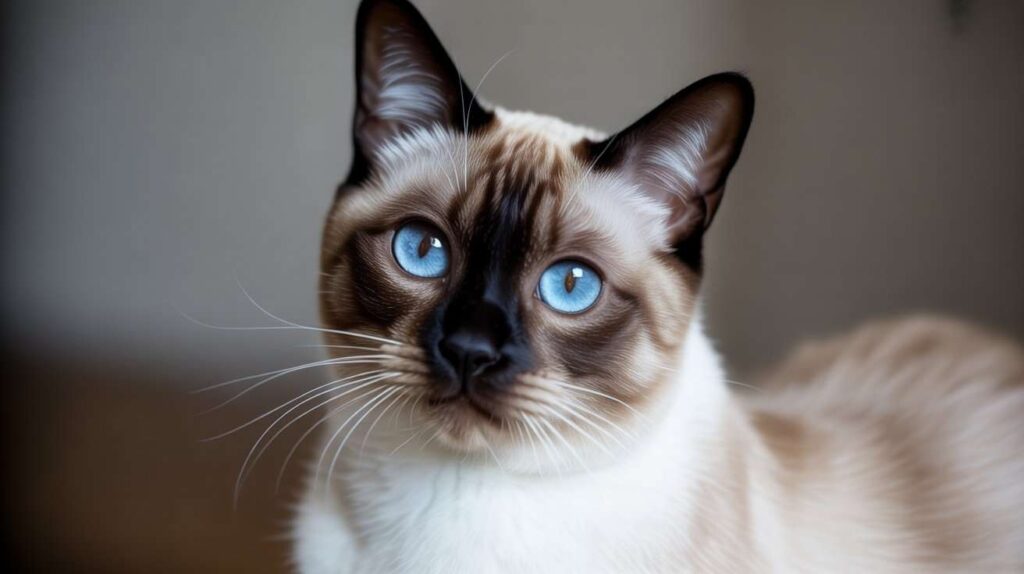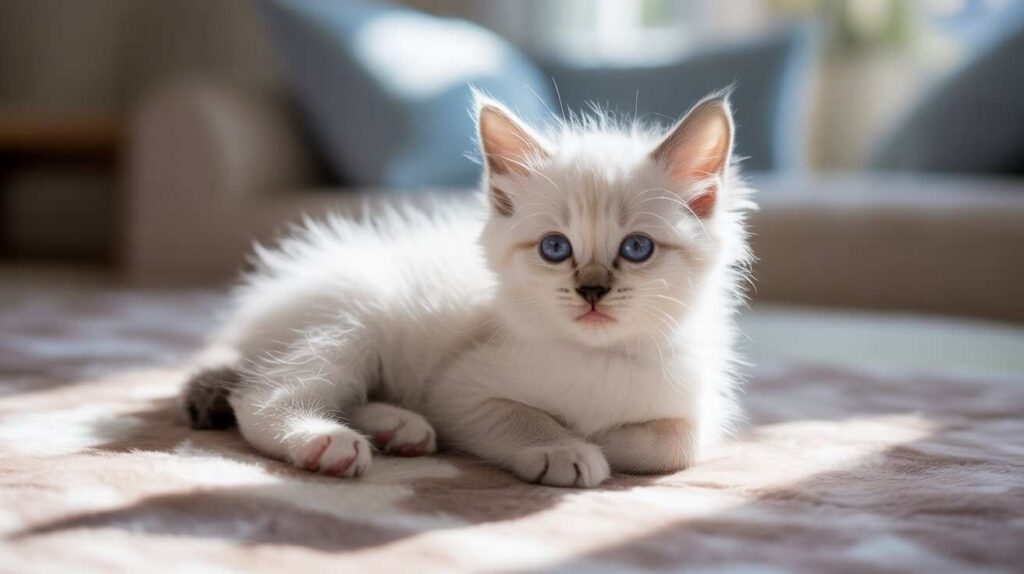Why Siamese cats have blue eyes: 5 fascinating reasons 1. Genetics 2. Light refraction 3. Albinism traits 4. Breeding 5. Unique eye structure.
Why Siamese Cats Have Blue Eyes
Siamese cats are one of the most popular breeds in the world, loved for their elegant coats, striking point colours, and dazzling blue eyes.
But have you ever wondered why their eyes are always blue, unlike most cats, which have green, yellow, or amber eyes?
The secret lies in a mix of genetics, temperature, and light. Their eyes don’t appear blue because of pigment, but because of the way light scatters inside the iris.
This unique trait is directly tied to the same gene that gives them their signature pointed fur pattern.
Why Siamese Cats Have Blue Eyes
| Reason | Explanation |
|---|---|
| Genetic Mutation (TYR) | Special gene lowers melanin in the iris → eyes stay blue |
| Temperature-Sensitive Pigment | Dark fur grows in cool areas, but eyes stay unpigmented |
| Light Scattering | Rayleigh scattering makes eyes look bright and vivid |
| Breed Trait | All purebred Siamese cats must have blue eyes |
| Myths & Vision | Myths of blindness are false; vision is mostly normal |
Genetics — The TYR Gene
The main reason Siamese cats have blue eyes is a change in the TYR gene. This gene controls the enzyme tyrosinase, which creates melanin (the pigment that colours fur, skin, and eyes).
- In Siamese cats, the enzyme is temperature-sensitive.
- It only works in cooler body parts, such as the ears, face, paws, and tail.
- The warmer areas, such as the belly and body, remain pale.
- Since the iris never produces enough melanin, the eyes remain permanently blue.
This special mutation is often referred to as the colourpoint gene or Himalayan mutation.
Temperature and Coat Colour
Siamese kittens are born entirely white. This is because inside the mother’s womb, it is hot and no pigment forms.
After birth, as the kitten grows in cooler air:
- Darker pigment forms on the ears, paws, tail, and face.
- The eyes remain unpigmented, which is why they stay blue forever.
Different point types (seal, chocolate, lilac, blue) only change the shade of the fur, not the eye colour.

The Physics of Blue Eyes
Here’s something amazing: Siamese eyes aren’t blue because of pigment. They look blue because of Rayleigh scattering — the same effect that makes the sky blue.

- With very little melanin in the iris, light scatters inside the eye.
- Shorter wavelengths of light (blue) scatter the most.
- This gives the eyes a clear, glowing, crystalline look.
That’s why Siamese eyes look so different from the green or gold eyes of other cats.
All Purebred Siamese Cats Have Blue Eyes
One crucial fact: all purebred Siamese cats have blue eyes.
- It is part of the official breed standard.
- If a Siamese does not have blue eyes, it is not considered a true purebred.
- Mixed-breed cats may sometimes have blue eyes if they inherit the same gene, but it’s not guaranteed.
- Other breeds, such as Himalayans and Ragdolls, also share this trait because they have the same genetic mutation.
Myths and Vision Facts
Due to their distinctive eye colour, many myths surround Siamese cats. Let’s separate fact from fiction:
- Myth: Blue eyes mean the cat is blind.
- Truth: Most Siamese cats see perfectly well.
- Myth: All Siamese cats are cross-eyed.
- Truth: Some have strabismus (crossed eyes) or nystagmus (slight eye movements). This is caused by how their optic nerves are wired, but it rarely affects daily life.
- Myth: Blue eyes give Siamese cats magical powers.
- Truth: The blue colour is purely a mix of genetics and light scattering.

Do Siamese Cats See Differently?
While Siamese cats are not blind, their blue eyes reflect light differently. This can sometimes affect depth perception or night vision.
- They may not see as clearly in low light compared to cats with amber or green eyes.
- Still, most Siamese cats adapt perfectly and live healthy, active lives.
Caring for Siamese Cats’ Eyes
Siamese cats’ blue eyes do not require special care, but it is essential to monitor them for signs of eye problems.
- Check regularly for signs of redness, cloudiness, or discharge.
- Vet visits: Schedule regular checkups to catch problems like glaucoma early.
- Indoor living: Protect sensitive blue eyes from harsh sunlight.
- A good diet supports healthy coat and eye health.

Final Note
Siamese cats have blue eyes because of a unique gene, temperature effects, and light scattering. This mix makes their gaze one of the most striking in the cat world.
FAQs
Q1. Do all Siamese cats have blue eyes?
Yes. Every purebred Siamese cat has blue eyes, as required by breed standards.
Q2. Why are Siamese kittens born white?
Because the womb is warm and prevents pigment formation. Darker points appear after birth, but the eyes stay blue.
Q3. Are Siamese cats blind because of blue eyes?
No. Blue eyes do not cause blindness. A few may be cross-eyed, but their vision is usually normal.
Q4. Can other cats have blue eyes like Siamese?
Yes. Breeds with the same gene mutation, such as Ragdolls and Himalayans, also have blue eyes.
Q5. Is the blue color real pigment?
No. It comes from light scattering in the iris, not actual pigment.

Hi, I’m Sana Sajid!I’m the voice behind CatsCare.blog, sharing my 10+ years of hands-on cat care experience. With a diploma in animal care, I offer practical tips, trusted advice, and easy-to-follow guides to help keep your cats healthy and happy.
When I’m not writing, I spend time with my own cats or exploring the latest developments in feline health. Follow CatsCare.blog for expert insights and real cat stories!





